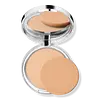What's inside
What's inside
 Key Ingredients
Key Ingredients

 Benefits
Benefits

 Concerns
Concerns

 Ingredients Side-by-side
Ingredients Side-by-side

Talc
AbrasiveIsostearyl Linoleate
EmollientTitanium Dioxide
Cosmetic ColorantOctyldodecyl Stearoyl Stearate
EmollientTocopherol
AntioxidantHydrogenated Lecithin
EmulsifyingTrimyristin
Skin ConditioningAlumina
AbrasiveMethicone
EmollientTetrasodium EDTA
Phenoxyethanol
PreservativePotassium Sorbate
PreservativeMica
Cosmetic ColorantIron Oxides
CI 77742
Cosmetic ColorantCI 73360
Cosmetic ColorantCI 75470
Cosmetic ColorantCI 77163
Cosmetic ColorantCI 15850
Cosmetic ColorantCI 77007
Cosmetic ColorantCI 77891
Cosmetic ColorantTalc
AbrasiveMica
Cosmetic ColorantOryza Sativa Extract
AbsorbentBoron Nitride
AbsorbentDimethicone
EmollientVp/Hexadecene Copolymer
Aroma
Water
Skin ConditioningKaolin
AbrasiveMagnesium Aluminum Silicate
AbsorbentAcrylates/C10-30 Alkyl Acrylate Crosspolymer
Emulsion StabilisingEthylhexylglycerin
Skin ConditioningDisodium EDTA
Montmorillonite
AbsorbentSodium Dehydroacetate
PreservativePhenoxyethanol
PreservativeSorbic Acid
PreservativeBenzyl Benzoate
AntimicrobialZinc Stearate
Cosmetic ColorantCI 77742
Cosmetic ColorantIron Oxides
CI 77891
Cosmetic ColorantTalc, Mica, Oryza Sativa Extract, Boron Nitride, Dimethicone, Vp/Hexadecene Copolymer, Aroma, Water, Kaolin, Magnesium Aluminum Silicate, Acrylates/C10-30 Alkyl Acrylate Crosspolymer, Ethylhexylglycerin, Disodium EDTA, Montmorillonite, Sodium Dehydroacetate, Phenoxyethanol, Sorbic Acid, Benzyl Benzoate, Zinc Stearate, CI 77742, Iron Oxides, CI 77891
 Reviews
Reviews

Ingredients Explained
These ingredients are found in both products.
Ingredients higher up in an ingredient list are typically present in a larger amount.
This ingredient is used to add a violet color to cosmetics.
It is created by reacting phosphoric acid, ammonium dihydrogen orthophosphate, and manganese dioxide.
Ci 77891 is a white pigment from Titanium dioxide. It is naturally found in minerals such as rutile and ilmenite.
It's main function is to add a white color to cosmetics. It can also be mixed with other colors to create different shades.
Ci 77891 is commonly found in sunscreens due to its ability to block UV rays.
Learn more about CI 77891Mica is a naturally occurring mineral used to add shimmer and color in cosmetics. It can also help improve the texture of a product or give it an opaque, white/silver color.
Serecite is the name for very fine but ragged grains of mica.
This ingredient is often coated with metal oxides like titanium dioxide. Trace amounts of heavy metals may be found in mica, but these metals are not harmful in our personal products.
Mica has been used since prehistoric times throughout the world. Ancient Egyptian, Indian, Greek, Roman, Aztec, and Chinese civilizations have used mica.
Learn more about MicaPhenoxyethanol is a preservative that has germicide, antimicrobial, and aromatic properties. Studies show that phenoxyethanol can prevent microbial growth. By itself, it has a scent that is similar to that of a rose.
It's often used in formulations along with Caprylyl Glycol to preserve the shelf life of products.
Talc is a clay mineral. It helps absorb moisture and improve the texture of products. Like other types of clay, Talc can have a slight exfoliating effect on skin. Talc can be added to increase the volume of products.
Some Baby powders are made by combining talc with corn starch. The word "talc" comes from Latin and originates from Arabic. Talc is a mineral commonly found throughout the world.
If you have any concerns about using talc, we recommend checking out the FDA's official page.
Learn more about TalcThis ingredient is a combination of red, black, and yellow iron oxide pigments. This combination of colors is usually found in foundation, because it results in a "skin" color.